14 Oct 2024
Transforming Operations: The Role of Oil and Gas Software Development
Matthew Connor
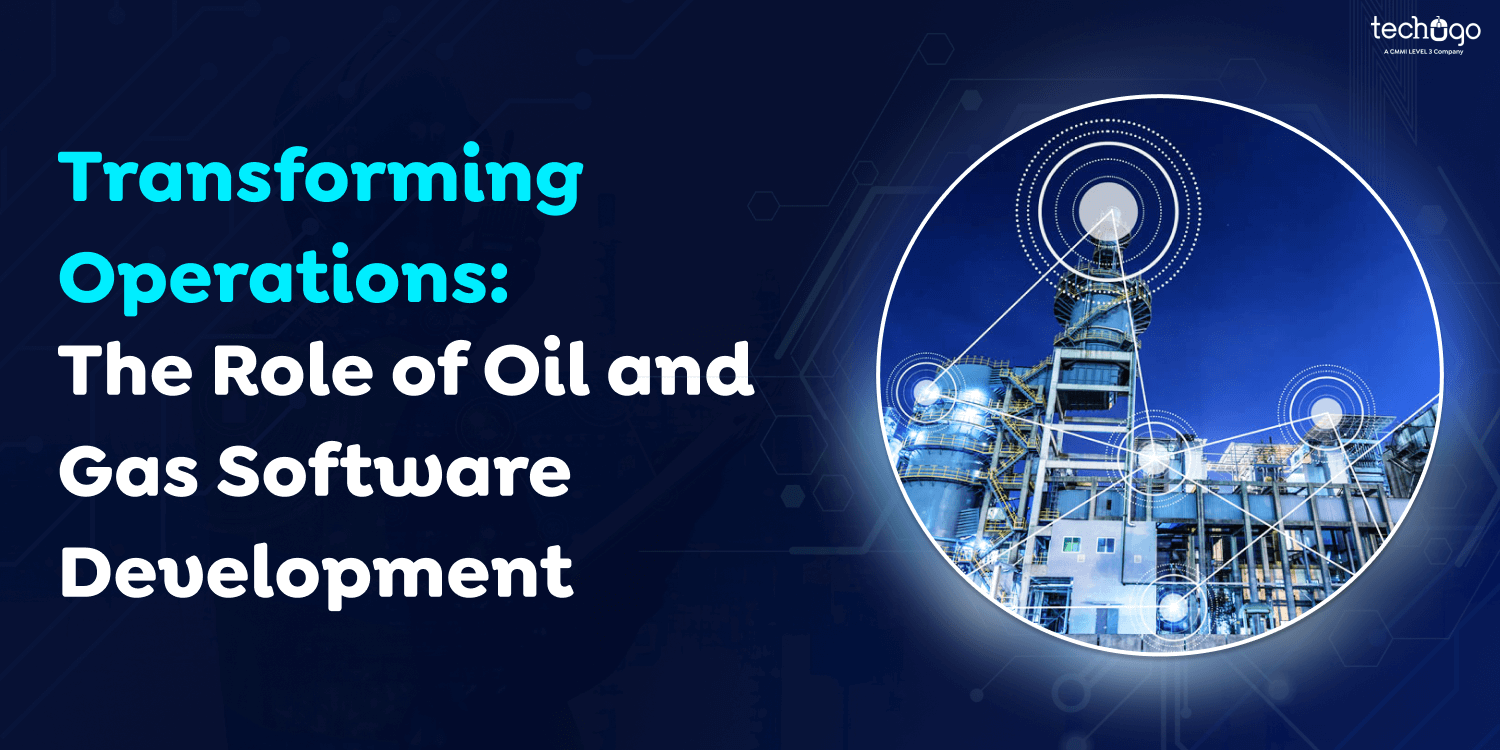
Do you want to know more about upstream oil and gas software development? Then you are in the right place. Making upstream oil and gas software requires careful planning and knowledge of the industry’s complexity. Since it is the core of the oil and gas industry, upstream operations include drilling, exploration, and production, each requiring exact management and cutting-edge technology.
The gas and oil industry has long been one of the biggest and fastest-growing industries. With new technologies and increased energy demand, this business will grow for years. However, this considerable growth requires a more accessible and efficient way of managing complex operations, from exploration and extraction to refining and distribution. Software development for the oil and gas industry can help, altering how we conduct the process easier and more efficiently.
Today, in the age of digital technology, the need for robust oil and gas software development that can speed up these processes is on the rise. The software can automate data analysis and collection, improving decision-making effectiveness. Upstream oil and gas software plays an essential role in maximizing the value chain.
This blog will walk users through the crucial processes of creating upstream oil and gas software, its applications, main features, and benefits.
So, let’s get started.
What Is Upstream Oil And Gas Software?
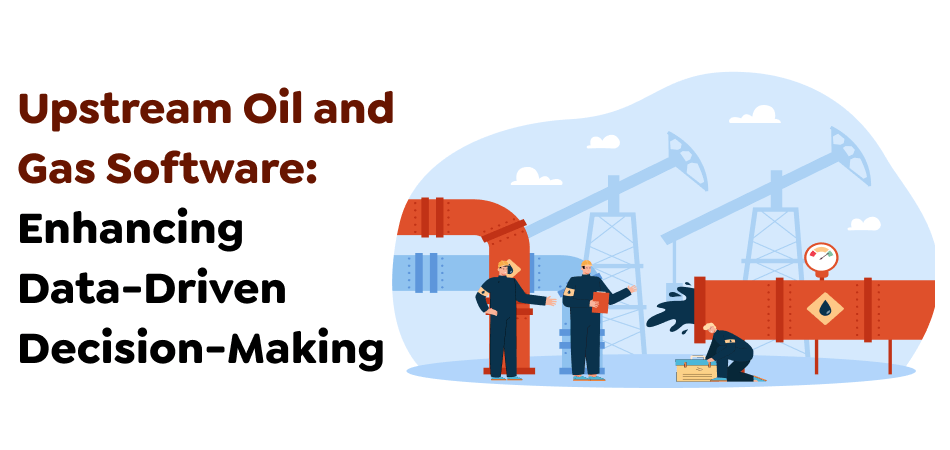
Upstream oil and gas software is an advanced technology that helps control and improve the oil and natural gas sector’s exploration, drilling, and production process. It simplifies geological surveys, reservoir modeling, planning wells, and monitoring production. The software allows companies to improve decision-making through the ability to analyze data in real-time, as well as tools for simulation and management tools.
This software also assists in minimizing risk, cutting costs, and increasing efficiency through the automation of complicated tasks while maintaining regulatory compliance. The best way to get involved in upstream oil and gas software development is with advice from a custom software development firm.
Also Read : The Complete Guide to POS Software Development: Types and Benefits
Reasons To Invest In Developing Upstream Oil And Gas Software
Upstream oil and gas software can play a significant role in optimizing exploration, drilling, and production methods in the oil and natural gas business. As the industry becomes more complicated, using traditional techniques can result in problems, higher costs, and risks.
1. Operational Efficiency
By automating routine tasks, such as monitoring, report-making, and checking compliance, Upstream software decreases team workload and allows them to concentrate on more important operations. Automation reduces mistakes and boosts efficiency.
2. Enhanced Data Management
The program allows the gathering, storage, and analysis of large volumes of data from various sources. This helps make better decisions through real-time information about capacity, performance, rates of production, and equipment health.
3. Cost Reduction
Automating operations with software can reduce operating costs by optimizing resource allocation, enhancing supply chain management, and increasing maintenance plans. This can result in substantial savings over the long term.
4. Risk Mitigation
The software allows companies to use predictive analytics to identify and reduce risks that could impact their operations before they occur. This approach helps reduce downtime and avoid costly mistakes.
5. Scalability And Flexibility
The customized software was designed to help you expand your business. It is easily scalable to accommodate increasing demands and the new challenges that arise as your business operations expand. The software’s flexibility ensures that it can continue to prove helpful when your company expands.
6. Sustainability
The gas and oil industry has seen a significant increase in the significance of sustainability. Companies can adopt more environmentally green practices by maximizing their use of resources and reducing waste using bespoke software. In addition to improving sustainability goals, this helps improve the company’s long-term performance and reputation.
7. Increased Exploration Success
Modern software tools assist exploration by providing advanced geochemical and seismic analysis tools. They improve the precision of exploration activities, leading to more accurate identification of gas and oil reserves and increased probability of successful drilling.
8. Regulatory Compliance
Upstream software for oil and gas helps enforce standard industry rules and regulations by automating documentation and reporting procedures. It also reduces the chance of a penalty for noncompliance.
Also Read : Driving the Future: A Comprehensive Guide to Automotive Software Development
Essential Features Of Upstream Oil And Gas Software 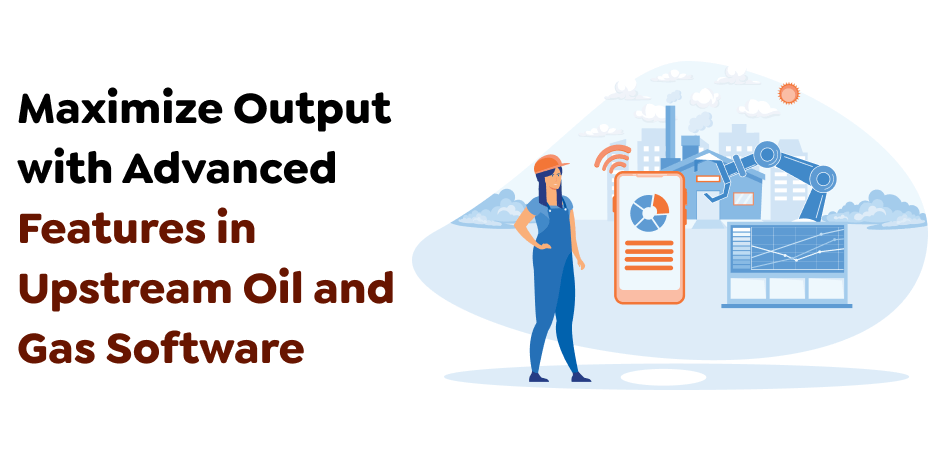
One of the great things about custom oil and gas software development is that it allows you to increase efficiency in operation and concentrate on areas that require more excellent care. One of the main features you can incorporate into your personal Upstream Oil and Gas features include:
1. Real-Time Data Analytics
The ability to analyze information in real-time is vital for making quick, informed decisions. Software solutions provide live data visualization, trend analysis, and predictive analytics, which allows for proactive operational management.
2. Reservoir Simulation And Modeling
The feature allows you to simulate the behavior of a reservoir and then see if the simulation is similar to your image. With the help of virtual models, firms can devise better methods to drill and reduce the risk that software could pose.
3. Integration Capabilities
Upstream oil and gas software typically integrates with other systems, such as ERP and SCADA. This integration ensures smooth data flows and improves operations’ overall efficiency.
4. Drilling And Well Management
This simplifies planning, evaluating the drilling, and managing oil wells. Companies can minimize the time needed to drill, lower risk, and increase wellbore quality.
5. Production Monitoring and Optimization
This function lets businesses analyze production information to understand better the amount of oil extracted from wells and how they can use advanced techniques for oil recovery if their production is insufficient. Thus, they will maximize the use of their resources.
6. User-Friendly Interfaces
Simple and easy-to-use interfaces are crucial for efficient, user-friendly software. Contemporary software products include visualizations in the form of dashboards, graphs, charts, and customizable settings that help users work with and understand data.
7. Planning Feature
Certain upstream oil and gas accounting software comes with this function, which helps in planning the money and resources needed to drill.
8. Asset Management And Maintenance
When creating upstream oil and gas software, including features can help manage and solve any issue. Pipelines, drilling tools, and physical assets are utilized for oil extraction.
9. Advanced Security
Due to the delicate nature of the oil and gas industry, robust security is vital. Software applications include security features such as encryption, access control, and audit trails to safeguard your customers’ data and ensure compliance with security standards.
10. Supply Chain And Logistics Management
This function is built into a customized upstream program that helps businesses run their supply chains efficiently, from refineries to production facilities to distributors.
Process Of Upstream Oil And Gas Software Development
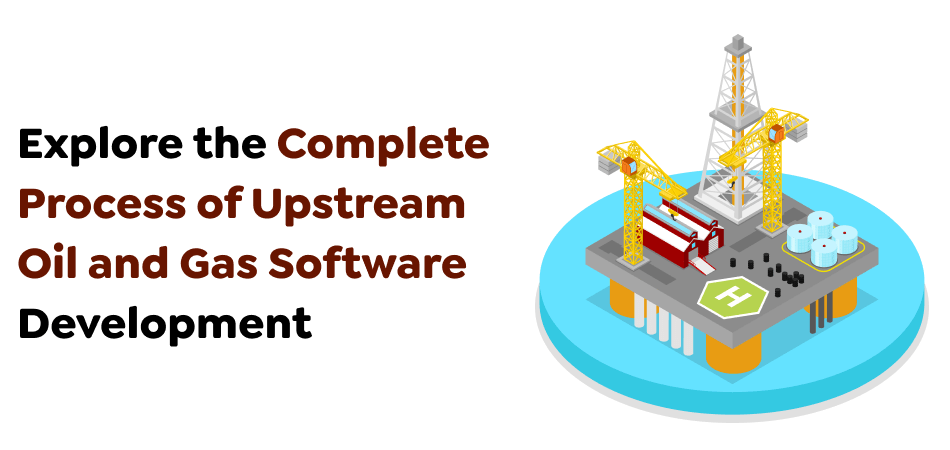
Here are the essential steps you need to follow for upstream oil and gas software development. Let’s have a look.
-
Identify the Needs
Talk to your business partners and obtain specific requirements to determine what you require to conduct exploration, drilling, and production. The first step is to ensure that your software meets the particular requirements and issues of the oil and gas upstream sector.
-
Plan And Design
Employ on-demand developers to develop the system that will be used for oil and gas software development. This system allows integration, visualization, and evaluation of information. Consider scalability and security so that your software can handle greater volumes of data and keep you safe from any threats.
-
Combining The Data
Sensors, old databases, and systems for real-time tracking are just a few locations from which information can come. Integrating these devices is crucial to understanding the activities and making more informed decisions.
-
Develop The Software
In the development of oil and gas software, firms set up essential functions, including managing synchronized workflows, monitoring equipment, and employing predictive analytics. To improve the accuracy of operations and speed, modules are developed to process and display data and report it in real-time.
-
Testing
Perform rigorous tests to ensure it functions and is trustworthy in various circumstances. Verify that the software functions properly and securely by examining its security to prevent the risk of data loss and system breakdowns.
-
Deployment
Introduce the program in a safe setting and offer users instruction and assistance. This ensures that the program is set up correctly and that the users are prepared to take advantage of its features.
-
Software Maintenance
Remember how the software is performing and then invite users to provide feedback. If needed, updates or patches will be made to accommodate requirements and integrate the latest technological advances. This will ensure that the software is current and running effectively.
Also Read : How Offshore Software Development is Shaping Global Business Growth
Cost To Develop Upstream Oil And Gas Software
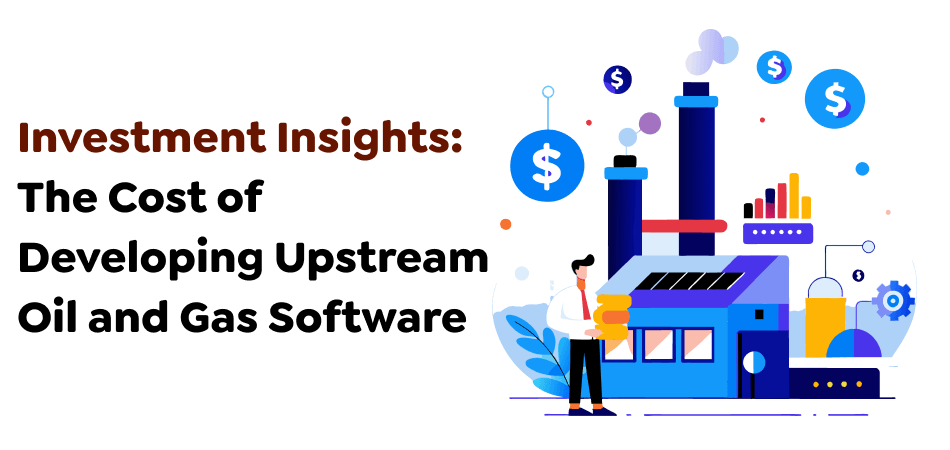
Although gas and oil upstream software development might be expensive initially, going digital can save time and money. Here is a rough estimation of the upstream gas and oil software development cost. Designing Upstream Oil and Gas software is costly, typically between $ 10,000 and $ 25,000.
The price of developing software to manage upstream oil and natural gas is often broken into several parts:
1. Development Cost
The cost of building upstream oil and gas software is contingent upon the features, complexity, and number of connections included. Thus, the expenses of creating software are usually determined by the scope of the undertaking, the technology employed, and the ability to hire software development company in Canada.
2. Training Costs
Users who wish to utilize innovative tools usually require additional training. The options differ in the number of trained users, whether the training is conducted on-site or via the Internet, and the time needed for the training.
3. Costs Of Implementation
The implementation involves sending the software out and connecting it to different software and systems. This includes installing the program, setting it up to fulfill specific requirements, and making sure that it is compatible with different software.
4. Costs Of Testing
Testing the program is crucial to ensure the application functions correctly and complies with all specifications. This includes tests for functionality, speed, and security.
5. Extra Costs For Maintenance
Software maintenance, updates, bug fixes, and technical assistance typically account for 15 to 20 % of the total development cost for the year.
Also Read : Unlock the Future of Software Development: Key Trends in 2024
Use Cases For Upstream Oil And Gas Software
Upstream oil and gas software advancements have transformed various business areas. The software offers specialized solutions for managing reservoirs, monitoring safety, and optimizing production, exploration, and drilling. These are the most important uses and applications.
1. Exploration Data Management
Software tools are essential to handling the huge amounts of geophysical and geological data gathered in exploration. They aid in visualizing and integrating the data gathered from different sources, including seismic surveys and logs from drilling operations, helping geoscientists make educated decisions concerning drilling potential sites.
2. Drilling Optimization
Modern software programs help maximize drilling processes by analyzing real-time information from drill equipment and sensors. They also aid in anticipating potential problems by enhancing drilling efficiency, cutting costs, and decreasing unnecessary time.
3. Reservoir Simulation
Reservoir simulation software analyzes the behavior of gas and oil reservoirs under diverse circumstances. The models aid engineers in forecasting the production rate, designing enhanced strategies for recovering oil and making strategic choices regarding reservoir management to increase output.
4. Production Monitoring
Monitoring production systems ensures the effectiveness of wells and production installations. Analyzing data regarding flows, pressures, and temperatures, the instruments assist operators in spot-checking abnormalities, enhancing manufacturing processes, and guaranteeing an efficient and safe extraction of hydrocarbons.
5. Asset Management
Asset management software provides an in-depth overview of the entire life cycle of infrastructure and equipment. It assists in scheduling maintenance, monitoring equipment health, planning repair or replacement costs, and improving operations efficiency and longevity.
6. Environment And Safety Compliance
Software for compliance can help oil and gas businesses comply with environmental and safety regulations. It monitors air emissions, controls waste, and ensures that operations comply with legally required standards, decreasing fines and improving environmental stewardship overall.
Also Read : The Ultimate Guide to Healthcare CRM Software Development: Enhance Patient Care
Key Technologies Used In Upstream Oil And Gas Software Development
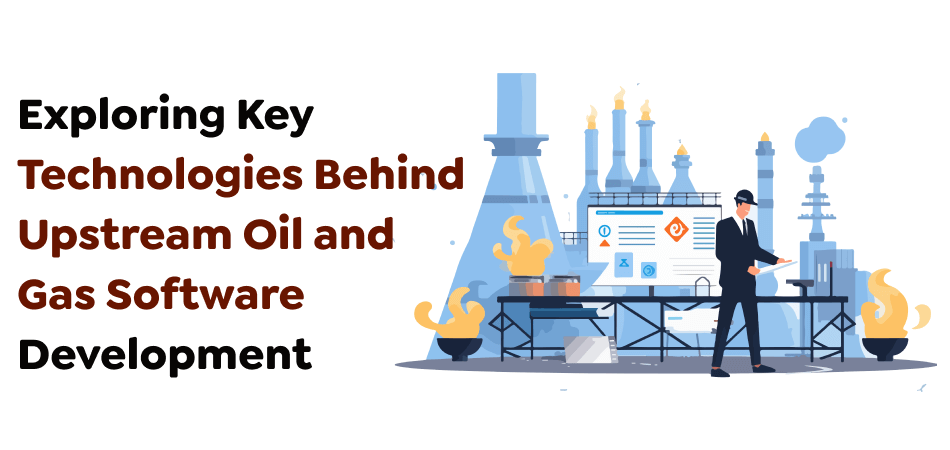
The oil and gas industry embraces digital technology to optimize operations, increase productivity, and enhance security. This results from the utilization of advanced analysis, Internet of Things (IoT) devices, and cloud computing, which allows you to collect and process data in real-time, allowing for more effective decision-making. Below are a few of the most popular trends in technology within the industry of oil and gas:
-
Internet Of Things (IoT)
The oil and natural gas sector utilizes the IoT to improve production, enhance equipment, ensure workers’ safety, and monitor remote sites. Using IoT technology, oil and gas facilities can reduce maintenance costs and gain a complete understanding of their equipment or processes.
The IoT revolutionizes the oil and gas industry by using sensors, equipment, and devices to gather data at a moment’s notice and in real-time. Remote monitors, proactive maintenance, and business process improvement are feasible. IoT applications are used to optimize supply chain processes, ensure the safety and tracking of assets, and monitor pipelines.
-
Artificial Intelligence
To streamline the production and exploration processes, AI and machine learning are used to study vast amounts of data. The technology can improve the efficiency of drilling operations, including pre-planned maintenance and reservoir modeling. Upstream, middle, and downstream activities in the oil and gas industry increasingly utilize AI and data science to solve complex problems.
Platforms incorporating AI aid in decision-making by providing prescriptive, predictive data. To increase investment ROI, AI assists petroleum engineers and oil and natural gas management in identifying and implementing new strategies for exploration and production.
-
Big Data & Analytics
Advanced techniques for data analysis, like big data analytics, are employed to gain valuable insights from the data. This information aids in optimizing production and downtime reduction, security enhancement and savings possibilities. Furthermore, historical data on previous operations can aid in the development and testing of AI-based algorithmic models and algorithms. The oil and gas industry benefits from regular options to cut operating expenses using big data analytics.
-
Robotics & Automation
Automated systems, robotics, and modern technologies are decreasing the need to use physical labor for risky or challenging tasks and improving effectiveness and safety. The energy and oil industry uses robotics and automation for increased efficiency and safety. In areas of risk, robots are used to perform tasks such as equipment inspection, cleaning, maintenance, and inspection. Pipeline monitoring, drilling, and other production processes all use robots.
-
Predictive Maintenance
Predictive maintenance within the oil and gas sector includes collecting sensor data from installation sites and integrating it into machine-learning algorithms. This technique lets engineers quickly assess equipment conditions and plan maintenance in advance.
Augmented by software, predictive processes visualize the parts clearly, helping operators anticipate possible failures. The solutions are applicable across midstream, upstream, and downstream processes. They improve equipment safety, extend its lifespan, and reduce the cost of maintenance and operations.
-
Augmented & Virtual Reality
Extended Reality (XR), mixed reality (MR), and AR and VR are just a few examples of immersive technology. The industry uses these technologies to train, simulate, and visualize tools; workers can perform remote inspections, obtain live information, and learn within a safe virtual space.
Companies that operate in the exploration and manufacturing (E&P) sector are a good example. They use AR technology for virtual reality training, including downhole imaging and monitoring. In addition, companies integrate physical and digital environments to facilitate human-machine interaction with the help of wearables as well as smartphone notifications.
-
3D Modeling & Visualization
Through 3D modeling and excellent visualizations, realistic depictions of oil and gas equipment are achieved. 3D modeling simulates the injection and production phases during the reservoir’s lifespan in combination with historical data on production. This helps to anticipate issues that could impact the reservoir’s safety.
Petroleum and gas engineers can use this information to improve the planning of operations and output. Furthermore, 3D visualization and modeling can enhance the efficiency of energy and oil assets and reduce costs and risk.
-
Blockchain
Blockchain technology is gaining prominence in the oil and natural gas industry due to its ability to enhance transaction security, efficiency, and transparency, while simultaneously improving processes like tracking asset ownership, verifying payments, and ensuring compliance with supply chain regulations.
Smart contracts can provide security and transparency absent in gas and oil paperwork and their operations. Distributed ledgers manage smart contracts and verify employees and contractors. Blockchain also allows oil and gas companies to simplify accounting for joint partnerships, post-trade settlements, and invoicing.
-
Cloud Computing
Cloud computing, which saves and processes data in remote servers, helps improve the oil and gas field by freeing local memory and computing capacity. This is particularly useful for handling the massive amount of data generated every day within the oil and gas business.
Utilizing cloud technologies and software-based applications, the industry is improving efficiency, security, and scalability while enabling the digital revolution. Cloud-native applications, which include a variety of “as-a-service” platforms, provide sophisticated analytics, interactive visualizations, and remote access to live insights.
Final Thoughts
The upstream oil and gas software development requires meticulous planning, technical know-how, and thorough knowledge of each industry’s specific needs. With a well-planned method, you can develop an efficient solution that increases the efficiency of your operations and makes better decisions. By using sophisticated software tools, businesses can enhance their efficiency in managing data, streamline the efficiency of their operations, and lower expenses.
The secret to success lies in choosing applications with the best attributes, knowing their cost, and making sure they are compatible with the needs specific to the upstream industry. As the sector evolves and technological advances, adopting innovative solutions will be crucial to maintaining your competitive edge while achieving long-term success. Techugo, a software development company, can help you create tailored solutions for your business.
Get in touch with us today to explore tailored solutions for your oil and gas software development needs!
Get In touch
We are excited to here from you and let’s start something special Together. Call Us for any inquiry.
Write us
sales@techugo.caJust a call away
About you




